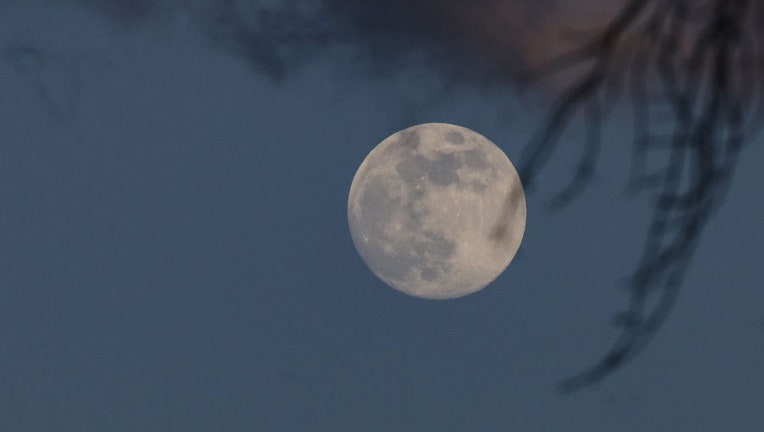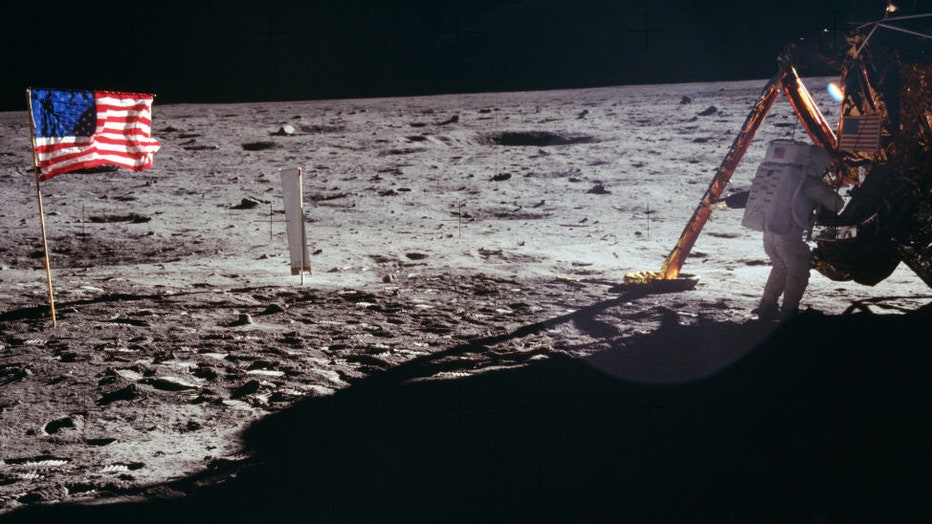Time zone debate hits the moon; world asks what time is it really on the lunar body?

A full moon rises over the US Marine Corps War Memorial in Virginia, United States on January 5, 2023. (Photo by Celal Gunes/Anadolu Agency via Getty Images)
A joint international effort to set a standard time on the moon is gaining steam thanks to European Space Agency, but officials warn coming up with a solution for the lunar body that last hosted humans more than 50 years ago will be challenging.
The idea of space explorers using an agreed-upon time has been floated around for years, but with increased rovers and lunar landers on the horizon, scientists say using time zones could ease operations.
The celestial body sits some 239,000 miles away from Earth, leading to debate on whether its standard time should be independent or synchronized with Earth’s time zones.
Currently, each mission operates on the time of the country of origin – meaning that rovers that are just feet apart could be operating on entirely different schedules.
WATCH OUT FOR THESE ASTRONOMICAL EVENTS IN 2023
Experts are hoping to fold in the development of a standard time with the advancement of LunaNet, a NASA-engineered network communications network on the moon.
"LunaNet is a framework of mutually agreed-upon standards, protocols and interface requirements allowing future lunar missions to work together, conceptually similar to what we did on Earth for joint use of GPS and Galileo," Javier Ventura-Traveset, a manager of ESA’s moonlight navigation, said in a statement. "Now, in the lunar context, we have the opportunity to agree on our interoperability approach from the very beginning, before the systems are actually implemented."

Astronaut Neil A. Armstrong, Apollo 11 mission commander, at the modular equipment storage assembly (MESA) on the historic first extravehicular activity (EVA) on the moon. (HUM Images/Universal Images Group via Getty Images)
Devising a solution to the time debate could be rather complicated. Asides from the influences of international politics, the moon is not synchronized to a standard 24-hour day.
NASA has calculated the moon’s standard lunar day to be the equivalent of 29.53 Earth days, but due to the gravitational field, clocks run about 56 microseconds faster than on Earth.
The ongoing debate could be incredibly challenging for the U.S., which has six times zones and has maintained a tradition of switching from standard time to daylight saving time and vice versa since the 1960s.
SEE THE OBJECTS HUMANS LEFT BEHIND ON THE MOON
"It is certainly an exciting time to do that now for the Moon, working towards defining an internationally agreed timescale and a common selenocentric reference, which will not only ensure interoperability between the different lunar navigation systems, but which will also foster a large number of research opportunities and applications in cislunar space," Traveset stated.
The ESA did not release a timetable on a potential decision but said it hopes it’ll serve as a landmark decision for other planetary destinations.
There are several rovers currently operating on the moon, and NASA intends to have humans land on the surface by 2025 as part of the Artemis III mission.

